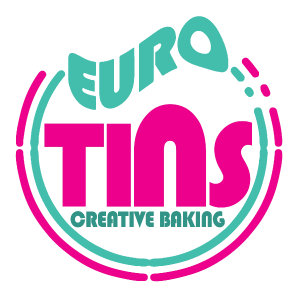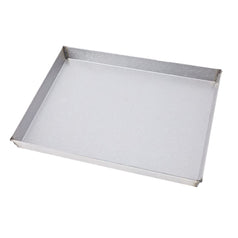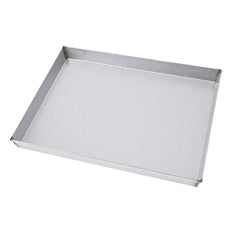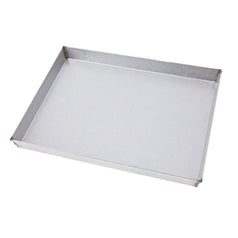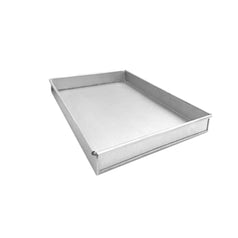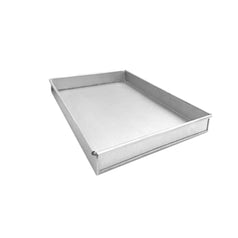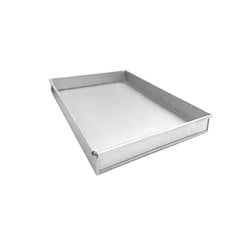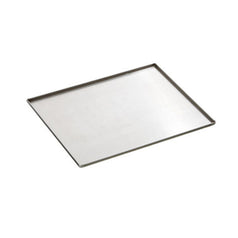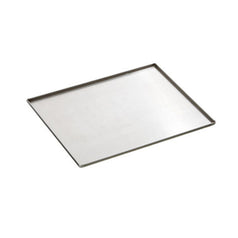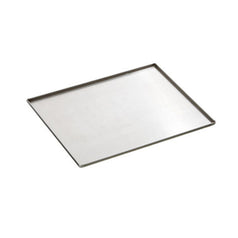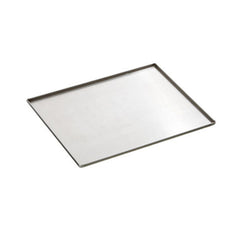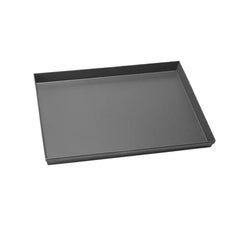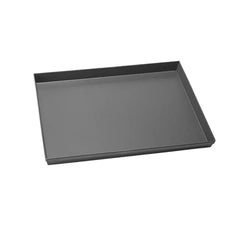-
EUROTINS Rectangle Baking Tray – 14”, 16”, 18” 24" and 30&quo...
Regular price From £12.99Regular priceUnit price per£17.99Sale price From £12.99 -
2 mm Aluminium Baking Tray - 300 x 200 x 25 mm - Mini
Regular price £22.00Regular priceUnit price per -
2 mm Aluminium Baking Tray - 600 x 400 x 25 mm - Medium
Regular price £30.00Regular priceUnit price per -
2 mm Aluminium Baking Tray - 425 x 300 x 25 mm - Small
Regular price £26.00Regular priceUnit price per -
Aluminised Baking Tray - 750 x 450 x 25 mm - Large
Regular price £22.00Regular priceUnit price per -
2 mm Aluminium Baking Tray - 750 x 450 x 25 mm - Large
Regular price £35.00Regular priceUnit price per -
Aluminised Baking Tray - 600 x 400 x 25 mm - Medium
Regular price £18.00Regular priceUnit price per -
Aluminised Baking Tray - 425 x 300 x 25 mm - Small
Regular price £16.00Regular priceUnit price per -
Aluminised Baking Tray - 300 x 200 x 25 mm - Mini
Regular price £12.00Regular priceUnit price per -
1 mm Stainless Steel Baking Tray - 750 x 450 x 25 mm - Large
Regular price £26.00Regular priceUnit price per -
1 mm Stainless Steel Baking Tray - 600 x 400 x 25 mm - Medium
Regular price £22.00Regular priceUnit price per -
1 mm Stainless Steel Baking Tray - 425 x 300 x 25 mm - Small
Regular price £18.00Regular priceUnit price per -
1 mm Stainless Steel Baking Tray - 300 x 200 x 25 mm - Mini
Regular price £15.00Regular priceUnit price per -
1 mm Aluminium Baking Tray - 750 x 450 x 25 mm - Large
Regular price £26.00Regular priceUnit price per -
1 mm Aluminium Baking Tray - 600 x 400 x 25 mm - Medium
Regular price £22.00Regular priceUnit price per -
1 mm Aluminium Baking Tray - 425 x 300 x 25 mm - Small
Regular price £18.00Regular priceUnit price per -
1 mm Aluminium Baking Tray - 300 x 200 x 25 mm - Mini
Regular price £15.00Regular priceUnit price per
Baking Trays
A baking tray, a staple in every kitchen, is an indispensable tool for both amateur and professional bakers. Whether you're roasting vegetables, baking cookies, or preparing a sheet cake, the right baking tray can make all the difference in your culinary results. This guide will help you understand the various types of baking trays, their materials, and how to choose the best one for your needs.
Types of Baking Trays
The material of your baking tray significantly impacts its performance, durability, and ease of cleaning. Here are the most common materials:
Aluminum:
Lightweight, excellent heat conductor, and resistant to rust. However, it can warp at high temperatures.
Stainless Steel:
Durable, non-reactive, and resistant to rust and warping. It’s heavier and not as good a heat conductor as aluminum.
Non-stick Coated:
Usually made of aluminum or steel with a non-stick coating. These are great for easy release and cleaning but should be handled with care to avoid scratching the surface.
Silicone:
Flexible and non-stick, ideal for baking muffins and cakes. However, it doesn’t provide the same crispness as metal trays.
Glass:
Great for baking and serving as it goes from oven to table. It retains heat well but can be heavy and prone to breaking.
Features to Consider
Size:
Ensure it fits your oven. Standard sizes include full (18x26 inches), half (18x13 inches), and quarter (9x13 inches) sheet pans.
Thickness:
Thicker trays (18-gauge or thicker) provide better heat distribution and are less likely to warp.
Edges:
Raised edges are useful for preventing spills and containing food, while rimless edges are great for easy removal of baked goods.
Cleaning and Maintenance:
Non-stick and silicone trays are easy to clean but may require gentle handling. Stainless steel and aluminum can handle more robust cleaning methods.
Tips for Using and Maintaining Your Baking Tray
Preheat the Tray:
Preheating your tray can help ensure even cooking and prevent sticking.
Use Parchment Paper or Silicone Mats:
These can prevent sticking and make cleanup easier, especially for sticky or delicate items.
Avoid Metal Utensils:
Use wooden or silicone tools to avoid scratching non-stick surfaces.
Regular Cleaning:
Clean your trays after each use to prevent the buildup of grease and food residue. Avoid abrasive cleaners on non-stick surfaces.
Conclusion:
Choosing the right baking tray involves understanding the types available, the materials they are made from, and their features. Investing in high-quality baking trays can enhance your baking experience, leading to better results and easier cleanup. By considering your specific needs and preferences, you can select the perfect baking tray that will serve you well for years to come
